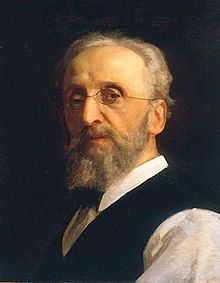Swiss-Italian painter (1821–1891)
.mw-parser-output .hidden-begin{box-sizing:border-box;width:100%;padding:5px;border:none;font-size:95%}.mw-parser-output .hidden-title{font-weight:bold;line-height:1.6;text-align:left}.mw-parser-output .hidden-content{text-align:left}You can help expand this article with text translated from
the corresponding article in Italian. (April 2021) Click [show] for important translation instructions.
Machine translation, like
DeepL or
Google Translate, is a useful starting point for translations, but translators must revise errors as necessary and confirm that the translation is accurate, rather than simply copy-pasting machine-translated text into the English Wikipedia.
Consider
adding a topic to this template: there are already 3,021 articles in the
main category, and specifying|topic= will aid in categorization.
Do not translate text that appears unreliable or low-quality. If possible, verify the text with references provided in the foreign-language article.
You must provide
copyright attribution in the
edit summary accompanying your translation by providing an
interlanguage link to the source of your translation. A model attribution edit summary is Content in this edit is translated from the existing Italian Wikipedia article at [[:it:Antonio Ciseri]]; see its history for attribution.
You should also add the template ((Translated|it|Antonio Ciseri)) to the
talk page.
For more guidance, see
Wikipedia:Translation.
Antonio Ciseri |
|---|
 Self-portrait of Antonio Ciseri painted in 1888 |
| Born | (1821-10-25)25 October 1821
|
|---|
| Died | 8 March 1891(1891-03-08) (aged 69)
|
|---|
| Nationality | Swiss |
|---|
| Education | Ernesto Bonaiuti, Niccola Benvenuti, Pietro Benvenuti, Giuseppe Bezzuoli |
|---|
| Known for | Painting |
|---|
| Notable work | Ecce Homo (1871)
The Transport of Christ to the Sepulcher (1864–1870) |
|---|
Antonio Ciseri (25 October 1821 – 8 March 1891) was a Swiss-Italian[1] painter of religious subjects.
Biography
He was born in Ronco sopra Ascona, Switzerland. He went to Florence in 1833 to study drawing with Ernesto Bonaiuti. Within a year, by 1834 he was a pupil of Niccola and Pietro Benvenuti at the Accademia di Belle Arti in Florence; he was later taught by Giuseppe Bezzuoli, who greatly influenced the early part of his career. In 1849, he began offering instruction to young painters, and eventually ran a private art school. Among his earliest students was Silvestro Lega.[2]
Ciseri's religious paintings are Raphaelesque in their compositional outlines and their polished surfaces, but are nearly photographic in effect. He fulfilled many important commissions from churches in Italy and Switzerland. Ciseri also painted a significant number of portraits. He died in Florence on 8 March 1891. Among his other pupils were the painters Oreste Costa, Giuseppe Guzzardi, Alcide Segoni, Andrea Landini, Raffaello Sorbi, Niccolò Cannicci, Emanuele Trionfi, Girolamo Nerli, and Egisto Sarri.
